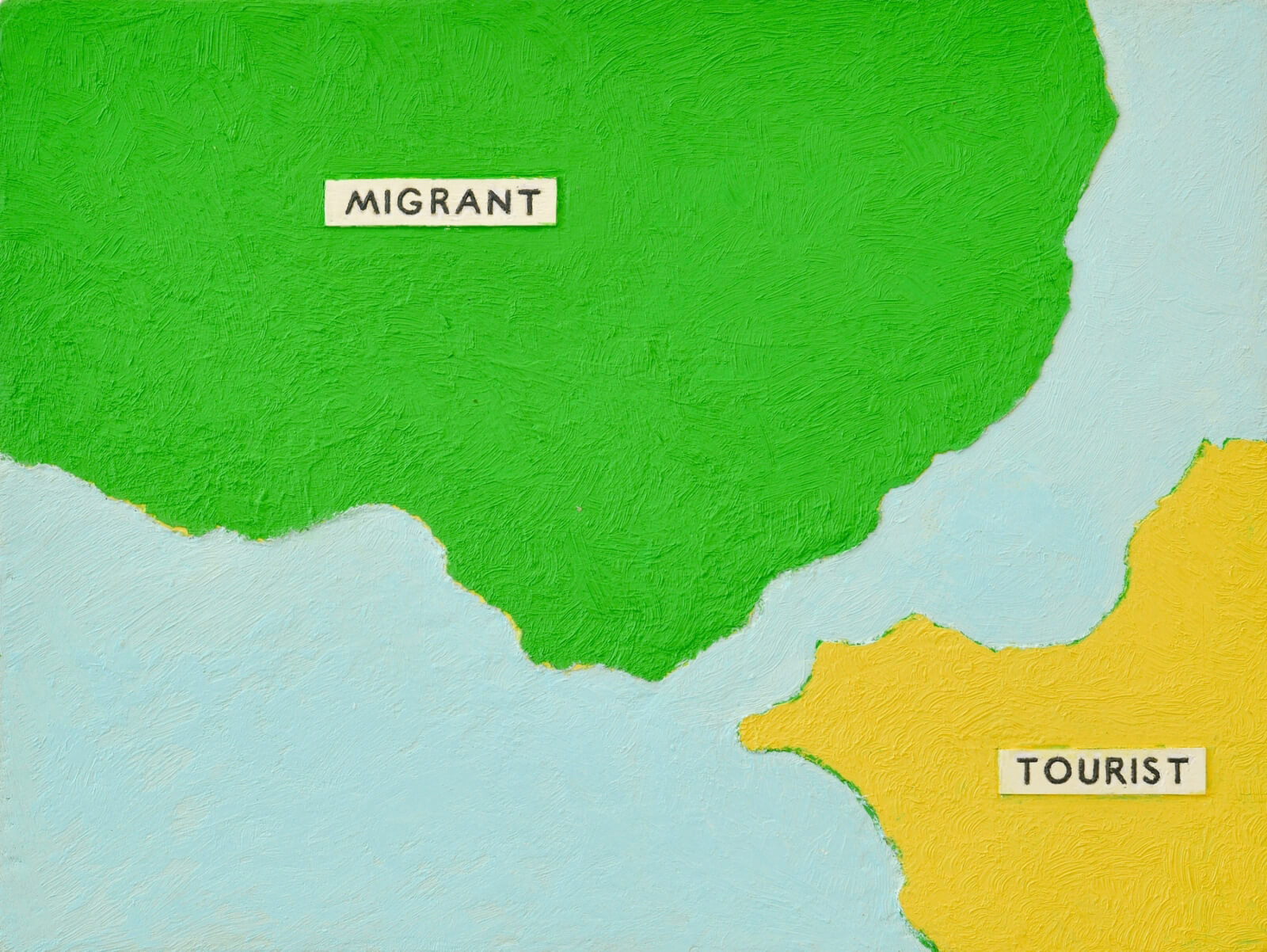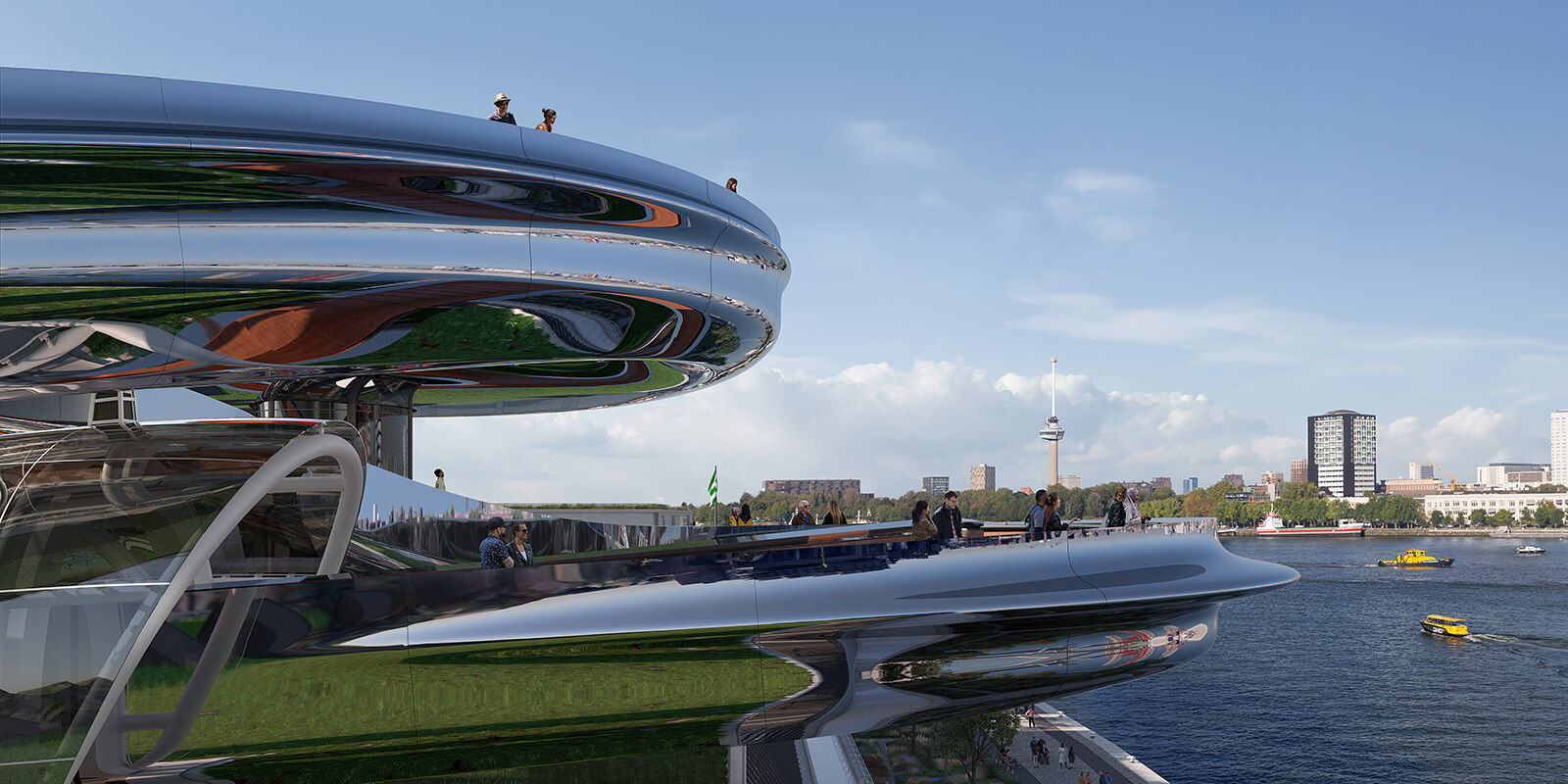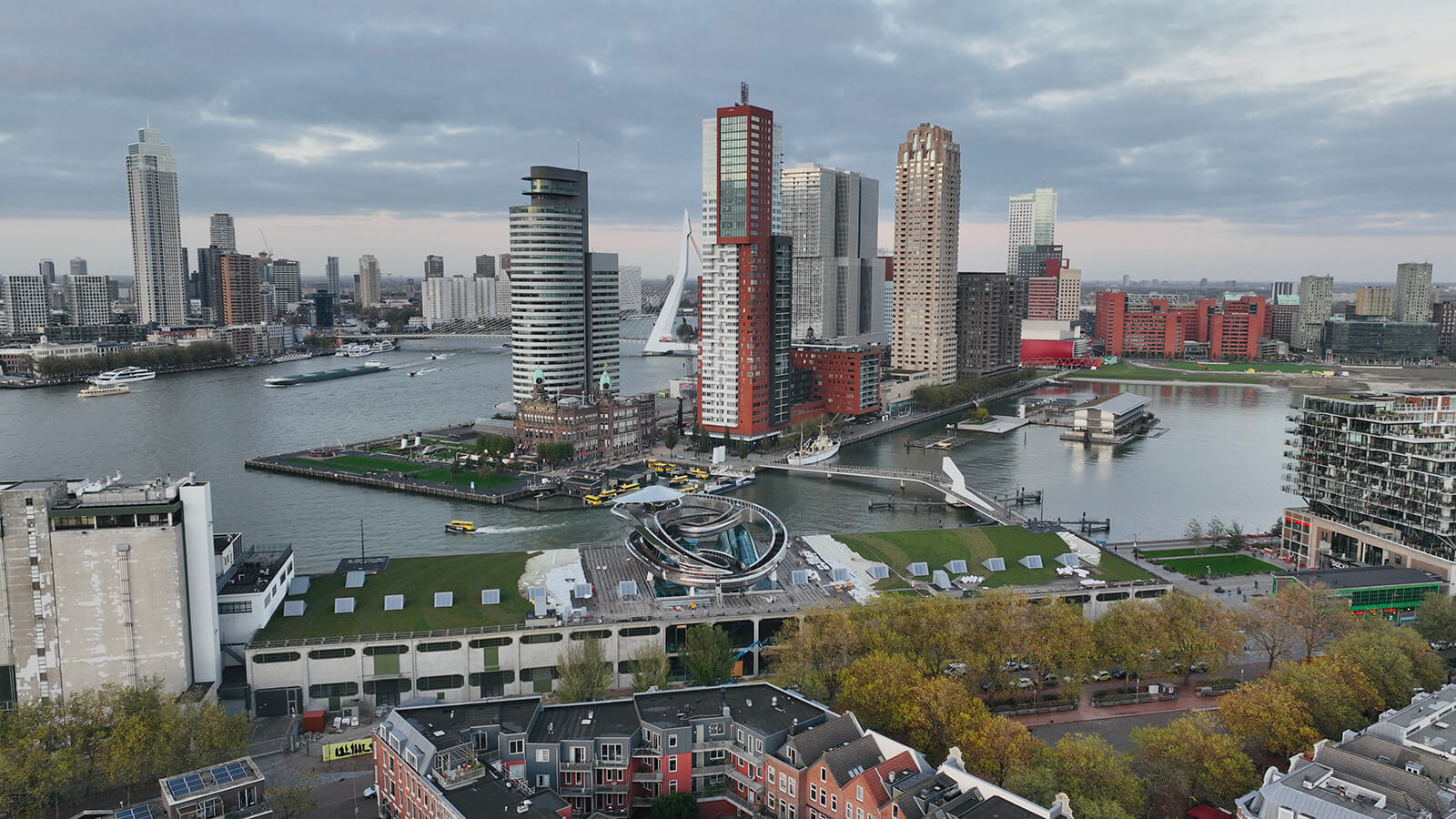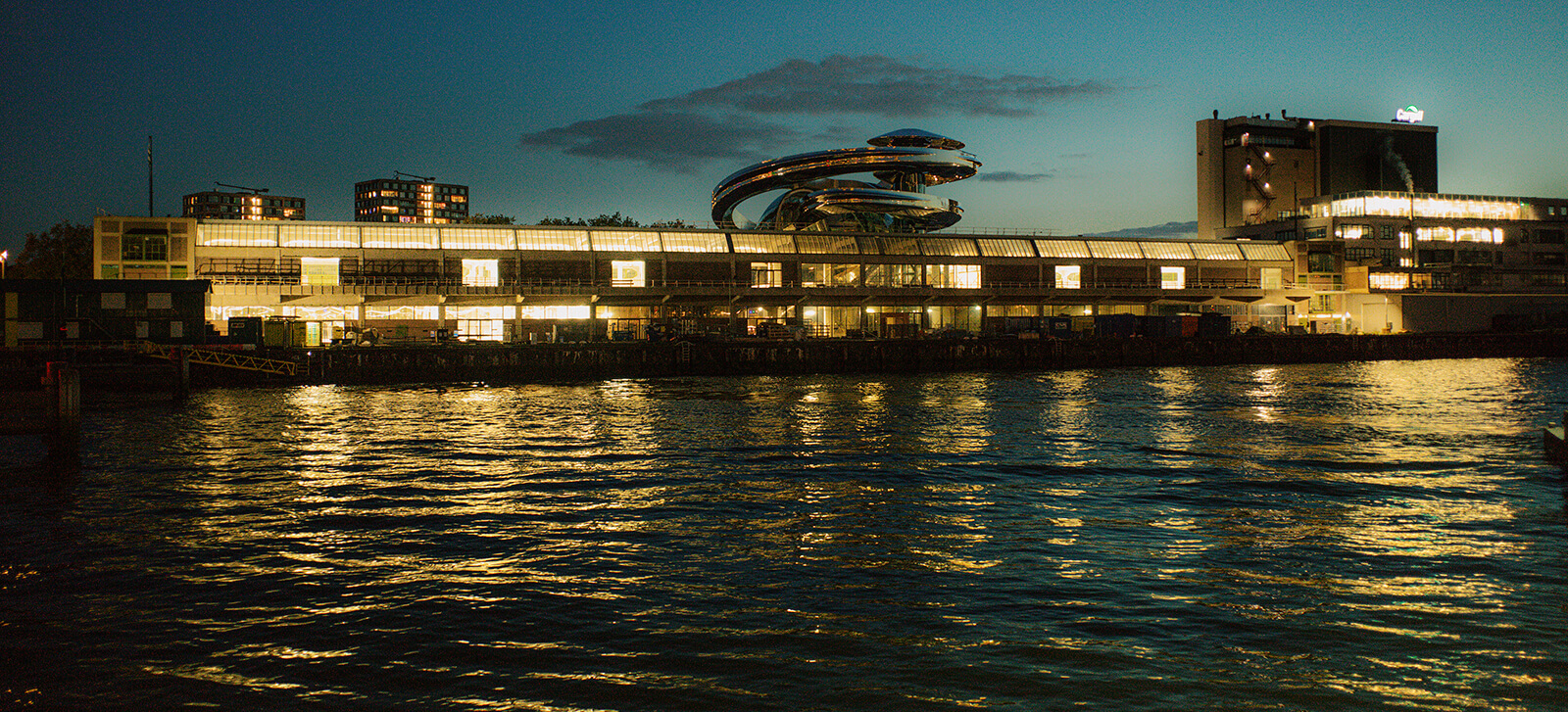URBANUS' design for a museum in Shekou, Shenzhen treats the "city as the exhibition"
by Mrinmayee BhootOct 03, 2024
•make your fridays matter with a well-read weekend
by Aarthi MohanPublished on : Feb 17, 2025
Migration has always been an experience laden with deep emotions, marked by the weight of departure and the anticipation of arrival. For humans, it is a journey woven with hope, loss and transformation, connecting generations through shared struggles and aspirations. This universal phenomenon is now the focus of Fenix, a new museum set to open on Rotterdam’s historic Katendrecht peninsula in May 2026. Designed by Beijing-based MAD Architects, this ambitious project seeks to capture the essence of human movement through art, architecture and programming.

The Fenix warehouse, where the museum is located, holds a significant place in the history of Rotterdam, Netherlands. Built in 1923, it was once one of the largest transhipment warehouses in the world. During its prime, it served as a hub for goods and people, particularly migrants embarking on journeys across the Atlantic. Many of these travellers were headed to Ellis Island in search of new opportunities, carrying with them stories of hope and resilience. The building’s proximity to the River Maas made it a focal point for migration, and its history is intricately tied to the millions of lives it touched, including notable figures like Albert Einstein and Willem de Kooning.

The transformation of this storied industrial building into a cultural landmark is a collaborative effort between MAD Architects and the Droom en Daad Foundation, a philanthropic organisation dedicated to the city’s cultural landscape through projects that celebrate art, history and social connections. The centrepiece of the public building is the Tornado, a striking double-helix sculptural steel staircase that rises through the core of the facility and extends onto a rooftop viewing platform. The documentary Ma Yansong: Journey to Design the Fenix Tornado explores the creation of the Tornado within its historical context, providing an understanding of how the design and the interior spaces symbolise the journeys of migrants who passed through its halls. From the rooftop, visitors will have expansive views of the River Maas and the skyline, offering a place to reflect on the city’s past and multicultural present.
Ma Yansong, founder of MAD Architects, explains the inspiration behind the spiral design in the press release, "The Tornado is all about the future, but it’s rooted in the past. For me, it’s a metaphor for the journeys of migrants who passed through this building.” This sentiment is reflected in the overall aesthetic, which seeks to honour the building’s historical significance while creating a space for contemporary dialogue about migration.
The interior of the renovation architecture project will feature three major installations on the ground floor. The Maze, an expansive structure composed of 2,000 donated suitcases, will serve as a poignant reminder of the belongings migrants carried with them. These suitcases represent physical possessions and the emotional weight of starting anew. Adjacent to it is the Family of Migrants photographic installation, which will showcase documentary images and portraits exploring themes of family, love, danger and farewells. These installations aim to evoke a deep emotional connection, making the stories of migration tangible and relatable.
In addition to these, a flexible space of 2,275 sq.m. will allow for innovative curatorial approaches. This adaptable area is designed to host a variety of exhibitions and programs, ensuring that the museum remains a dynamic and evolving space for exploration and education.

The historic port building has been restored to preserve its original character while accommodating its new role as a cultural complex. The first floor will be dedicated to highlighting Rotterdam’s migration history, providing visitors with an opportunity to engage with personal stories of departure and arrival. This section of the museum will serve as a bridge between the past and present, connecting the experiences of early migrants with contemporary discussions about migration as a global issue.
The museum architecture reflects Yansong’s interest in the relationship between human creations and nature. Drawing from his memories of organic courtyards and hutong gardens in old Beijing, the Chinese architect envisions architecture as a medium that interacts with its surroundings while capturing emotions and memories. This philosophy is evident in the Tornado’s fluid form, which evokes a sense of movement and continuity, mirroring the journeys of those who once passed through the warehouse.

Above the historic structure, the rooftop platform will serve as a place for contemplation and community engagement. It will invite visitors to reflect on the complexities of migration, offering a vantage point that connects the city’s industrial past with its vibrant present. The platform also provides a physical and symbolic connection to Hotel New York, the former headquarters of the Holland America Line, which played a pivotal role in the migration stories linked to the storage complex.
As the first public cultural building in Europe to be designed by a Chinese architectural firm, this renovation project represents a milestone in cultural collaboration. The museum’s mission to explore migration as a central theme resonates not only with Rotterdam’s local history but also with broader global narratives. Through its innovative design and thoughtful programming, it aims to create a space where visitors can engage with the complexities of migration through education and dialogue.
The opening of Fenix in May 2026 marks a new chapter for the Katendrecht peninsula, transforming it into a landmark architecture project that celebrates the resilience and diversity of human experiences. By honouring the stories of those who passed through its halls, the museum ensures that the legacy of the warehouse continues to inspire future generations.
Name: Fenix Museum
Location: Rotterdam, Netherlands
Type: Museum, Renovation
Tornado Specifications: Height: 30 m; Ramp Length: 550 m; Cladding Area: 4,000 sqm Polished Stainless Steel
Principal Partners in Charge: Ma Yansong, Dang Qun, Yosuke Hayano
Associate Partner in Charge: Andrea D’Antrassi
Client: Droom en Daad Foundation
Architectural Design: MAD Architects
Design Team: Alessandro Fisalli, Neeraj Mahajan, Marco Gastoldi, Edgar Navarrete, Cievanard Nattabowonphal, Jordan Demer, Chen Yien, YukiIshigami, Pittayapa Suriyapee, Claudia Hertrich,
Executive Architect: EGM
Monumental Architecture Renovation: Bureau Polderman
Structural Engineer: IMd Raadgevende Ingenieurs
Steel Constructor: CSM Steelstructures
Cladding Constructor: Central Industry Group (CIG)
Lighting Consultant: Beersnielsen Lichtontwerpers
Installation Design: Bosman Bedrijven
Installation Advisor: DWA
Building Physics Advisor: LBP Sight
Site Area: 8,000 sq m
Gross Internal Area: 16,000 sq m
Year of completion: 2018 – 2025
by Anushka Sharma Oct 06, 2025
An exploration of how historic wisdom can enrich contemporary living, the Chinese designer transforms a former Suzhou courtyard into a poetic retreat.
by Bansari Paghdar Sep 25, 2025
Middle East Archive’s photobook Not Here Not There by Charbel AlKhoury features uncanny but surreal visuals of Lebanon amidst instability and political unrest between 2019 and 2021.
by Aarthi Mohan Sep 24, 2025
An exhibition by Ab Rogers at Sir John Soane’s Museum, London, retraced five decades of the celebrated architect’s design tenets that treated buildings as campaigns for change.
by Bansari Paghdar Sep 23, 2025
The hauntingly beautiful Bunker B-S 10 features austere utilitarian interventions that complement its militarily redundant concrete shell.
 surprise me!
surprise me!
make your fridays matter
SUBSCRIBEEnter your details to sign in
Don’t have an account?
Sign upOr you can sign in with
a single account for all
STIR platforms
All your bookmarks will be available across all your devices.
Stay STIRred
Already have an account?
Sign inOr you can sign up with
Tap on things that interests you.
Select the Conversation Category you would like to watch
Please enter your details and click submit.
Enter the 6-digit code sent at
Verification link sent to check your inbox or spam folder to complete sign up process



by Aarthi Mohan | Published on : Feb 17, 2025
What do you think?